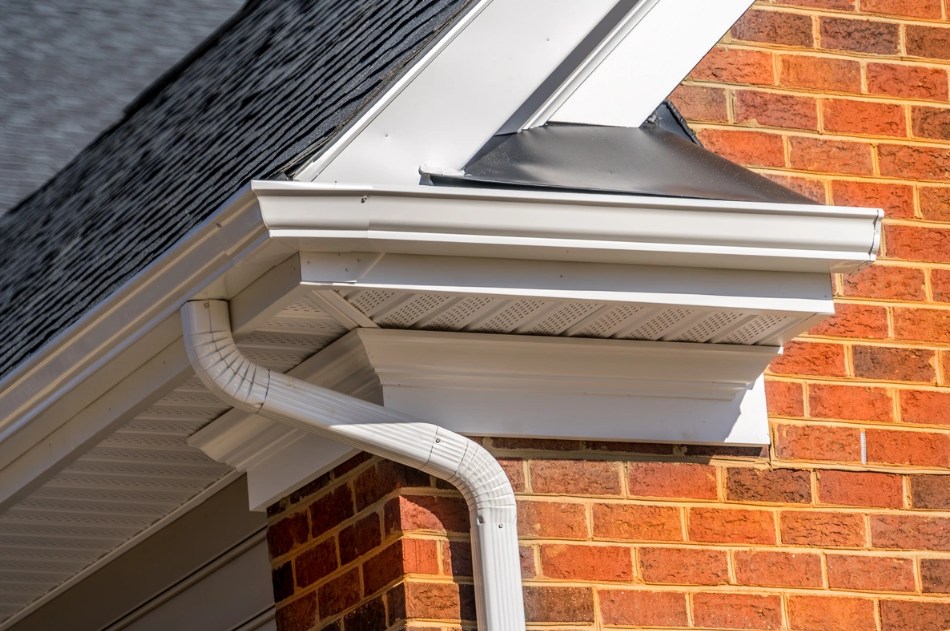Good in-home ventilation is important for healthy and low energy living. If you’re reading up on how to increase air flow in your house and want to address all the possible ways to affect it, soffit vent is something you should not ignore. Whether you’re in the process of constructing a new house or you want to update an existing ventilation system, follow along our guide to learn all there is to know about soffit vents: their role, how to install them, and much more.
Thank you for reading this post, don't forget to subscribe!Why Are Soffit Vents Necessary?
Soffit vents are a vital component of any home ventilation system as they allow airflow within the attic space. By allowing fresh air to enter at the soffits and vent out through the roof, roof gable vents pull this moisture out before it causes a problem, reducing the risk of roof damage and premature aging. They are frequently ignored but are among the most important elements of a house with good ventilation.
Homes without soffit vents will face the following issues:
- Higher-than average energy costs because of the need for extra cooling or heating
- Mold, and mildew-causing moisture accumulation
- Condensation and ice dams that formed on the roofs during winter-period due to melting water.
If you are concerned about energy efficiency and need structural integrity in your residence, there should be no compromise when it comes to soffit vents.
How Do Soffit Vents Work?
They do this by allowing air to flow freely through an “attic ventilation.” They are installed underneath the overhang of your roof, also called a soffit. In tandem with exhaust vents (such as ridge or gable vents), they form a balanced system that sucks fresh air in through the soffits and out through the exhaust.
That you can stage like so:
- Maintains even temperature levels throughout the attic.
- Eliminates weather damage that can be caused by humidity.
- Makes Your Home More Energy-Efficient -By reducing the strain on your HVAC system.
Here we’re going to discuss what soffit vents are and how they function so you can decide if soffits are right for you.
Different Types Of Soffit Vents
All soffit vents are not alike, and just as with hood, roof and gable vents, the type of soffit vent you choose depends on your home’s design and purpose for venting. Here are some common types:
-
Continuous Vents
These soffit vents are continuous soffit vents that cover the entire span of the soffit area for adequate air circulation in an attic. Continuous Vents are great for larger homes or anything that needs continuous ventilation.
-
Individual Vents
These also are known as “strip vents” and are small individual units spaced apart along the soffit. Not as comprehensive as continuous vents, but useful for smaller to medium homes.
-
Perforated Panels
These are sold as sheets or panels and have pre-cut perforations for air to move through. Perforated soffit panels are a popular choice for homeowners that want a consistent and tidy look.
-
Custom Vents
If you need something special for your home, such as a certain size or shape, we also make custom soffit vents. These are especially useful for houses without typical soffits.
Knowing about these options will help you choose the soffit vent style that is most appropriate for your home.
How to Install Soffit Vents Step-by-Step
Soffit vent installation can sound intimidating, but with the proper tools and some know how, it is a doable DIY. Here’s what you need to do:
Tools You’ll Need:
- Tape measure
- Drill
- Vent covers
- Jigsaw or circular saw
- Ladder
- Safety goggles
Installation Steps:
-
Plan the Placement
Mark and measure where the vents will go. You may space them evenly so that the ventilation will be uniform and balanced.
-
Cut the Openings
Using a jigsaw, cut rectangles or circles along the traced soffit areas, that is of the same size as your vent covers.
-
Install the Vent Covers
Hold the soffit vent cover on top of your cutouts, and attach with screws or nails.
-
Check for Blockages
Check the air-loss sieves aren’t blocked by insulation or debris for maximum performance.
-
Seal Around the Vents
Seal it with caulk or weather-stripping sealant to keep out pests and moisture.
If you find your soffits hard to reach or have any doubts on how to address the work, you’ll want to consider hiring a pro.

How to Maintain the Dumbbell Set for Extended Use
Only if maintenance is regular will the soffit vents function effectively. Read on for easy maintenance tips to keep them in great shape:
-
Regular Cleaning
Make sure nothing obstructs the vents: Debris, cobwebs, or birds’ nests can get in the way, so check for and remove any such obstacles at least once a year.
-
Inspect for Damage
Check for the presence of rust, cracks or loose fastenings, as these could affect the vent’s performance.
-
Prevent Pest Intrusions
Fit mesh screens or caps to prevent birds, insects and rodents from nesting in the vent.
-
Monitor Airflow
Occasionally check that the airflow isn’t obstructed. If necessary, hire a professional to perform an airflow test.
Soffit Vents: Most Common Problems and How to Troubleshoot Them
Soffit vents sometimes can also cause headaches, even if they were installed correctly and regularly maintained. Here’s a selection of the most common problems, and how to solve them:
Blocked Air Passages
Make sure insulation or stuff stored in the attic aren’t blocking airflow. Correct baffles can help to keep air pathways clear.
Poor Ventilation
If your attic still feels hot or humid, the proportion of soffit and exhaust vents may be unbalanced. Install additional vents, or consider replacing your system with one that is more efficient.
Pests or Leaks
Then, put in some hardy vent covers with a screen that will keep wildlife out but still let air through.
Advantages of Having the Right Soffit Vent Installation
When they are properly installed, soffit vents grant homeowners several important benefits:
Improved Energy Efficiency
By keeping temperatures in your attic consistent, your HVAC system doesn’t have to work as hard to cool or heat your home.
Extending Roof Lifespan
Proper ventilation also means you won’t have to pay for costly damage repair such as rot or warping.
Enhanced Indoor Comfort
Adequate ventilation will keep hot or cold air outside your living area.
Environmentally Friendly
Increased energy efficiency translates into lower carbon footprints, soffit vents qualify as eco-friendly home opportunities.
Quality Ventilation for a Healthier Home
While soffit vents may be tiny, they can make a big difference in your home’s performance. From reducing moisture damage to enhancing energy efficiency by leaps and bounds, these vents are an investment in the health of your home and your comfort.
If you’re ready to start improving your home with soffit vents, but want a little extra help or support, speaking with a professional contractor is a wise next step.
Invest in the best ventilation today for a healthier looking, more comfortable home for years to come.



